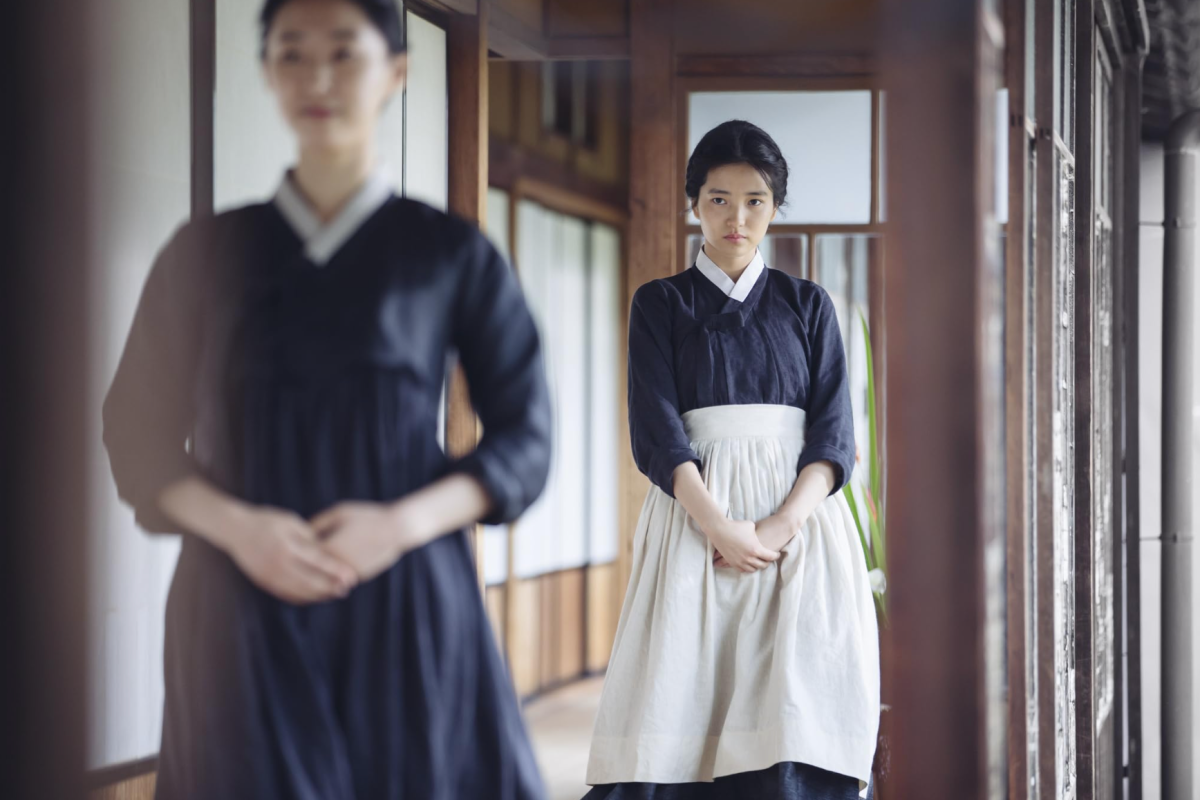
IMDB

No, not “The Handmaid’s Tale.” It’s “The Handmaiden” — a scintillating story of romance and trickery set in Japanese-occupied Korea that is still feminist but a bit more queer. The BAFTA-winning film, directed by legendary Korean director Park Chan-wook, follows Sook-hee, a Korean swindler tasked with serving as a handmaiden to the Japanese heiress Lady Hideko in 1930s colonial Korea. Sook-hee aims to make Hideko fall in love with the swindler’s con-man employer Count Fujiwara, who, after marrying her, will throw Hideko in an asylum and run away with her fortune.
Park’s masterful use of contrasting visuals shines through early in the film, with the distinct lighting between interior and exterior shots a hallmark of the film’s style and messaging. While the inside of the house where Hideko resides is incredibly lush and ornate, it is dark and feels claustrophobic, suffocating the viewer just as it suffocates its resident. In contrast, shots of the natural world outside the home use highly saturated, warmly lit colors, emanating a sense of freedom and joy that grows as the film progresses.
The use of language in the film, alternating between Korean and Japanese, is also noteworthy, with different colored subtitles distinguishing the two languages depending on the situation and character. Given that the film is set during Japan’s interwar occupation of Korea, oppressive characters often use Japanese to establish order and supremacy over others, while Korean is reserved for more sincere, passionate and intimate moments. This language barrier also often falls along gendered lines, as the men speak Japanese more often to assert their authority over women in colonial society.
The exploration of gender, sensuality and sexuality in “The Handmaiden” creates some of its most memorable moments; scenes focusing on these motifs often contain subtextual commentary on colonialist oppression. Although the film can sometimes teeter toward the male gaze with its depictions of female sexuality, it nevertheless succeeds in revealing women’s oppression under a patriarchal society while capturing female autonomy through relationships that decenter men. The centralization and legitimization of the primary queer female relationship felt almost radical in its willingness to explore the trials, tribulations and intimacy of such a dynamic, freeing the women of both direct and structural oppressions.
The film further explores its central themes through the repeated use of symbols, such as bells, gloves and rope. Park includes these symbols effectively, if somewhat heavy-handedly, to demonstrate the effects of entrapment and suffocation and to keep viewers engaged.
The performances in the film are stellar. Kim Tae-ri’s earnestness as Sook-hee allows audiences to sympathize with the trickster, and Ha Jung-woo’s nonchalant cruelty as Fujiwara manages to convey the attitude of a truly disgusting man. However, of all the performances, Kim Min-hee’s multifaceted portrayal of Hideko truly stands out, with her enigmatic and often difficult-to-place personality drawing in the viewer just as it draws in Sook-hee.
Although complex cons are the focal point of the film’s plot, the story’s core masterfully tackles class, gender, violence, sexuality, colonialism and love. While the film’s craft is timeless, it also offers poignant commentary on a specific period of Korean history and its impacts on society through the cultural pervasiveness of patriarchy. The messages remain ever powerful and relevant for the contemporary world. Overall, “The Handmaiden” is a story about regaining autonomy, whether over colonialism or a patriarchal society. The narrative succeeds in fully enabling women to retake their power as well-rounded characters and individuals.
Whether you are more interested in the plot’s twists and turns, the sociopolitical commentary or just want a “good for her” kind of movie, “The Handmaiden” is sure to seduce you.